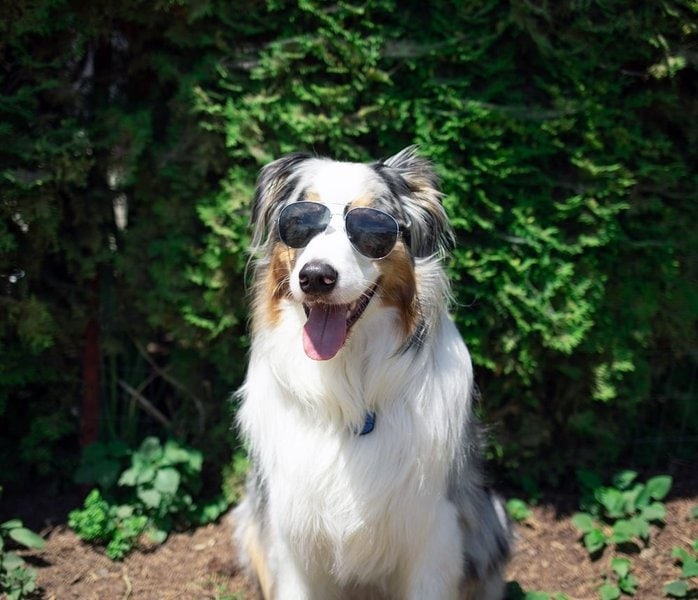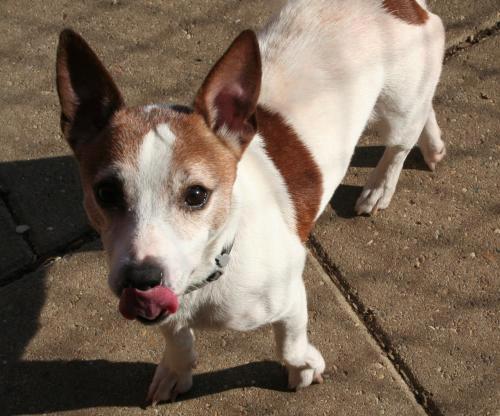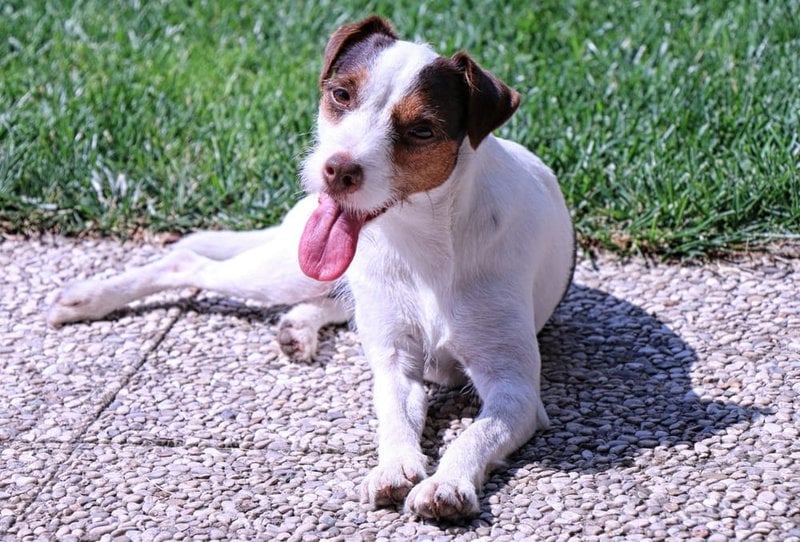There is a lot of heat in the summer, and it’s easy to forget that doggies are just like people when they overheat. The inability to properly dissipate heat causes a heat stroke, which is described as a body temperature of more than 105.8 °F.
As a result, knowing the symptoms and signs of a dog’s heat stroke is critical to being able to react quickly. Knowing how to avoid it is necessary because it’s always better to be safe than sorry!
Heat stroke can happen to dogs. Since dogs do not sweat as much as people do, this happens. Panting is the primary method through which dogs control their body temperatures. Heat stroke and heat exhaustion may occur if panting isn’t enough to cool them down.
For our dogs, heat stroke is a severe condition that could be fatal if it is not treated or controlled. Let’s take a look at what causes a dog’s heat stroke, how to spot the signs or symptoms, as well as what you can do to help your pooch as soon as possible.
What Causes Heat Stroke In Dogs?

Leaving your pooch in the car with no proper ventilation is the most frequent cause of heat stroke. In this condition, your dog’s body temperature can quickly rise, frequently within minutes.
In addition, leaving your doggie in the yard without access to shade and water on a hot sunny day and exercising excessively or vigorously in the heat are all prevalent causes.
Even though the humidity and temperature in the environment may not appear to be extreme, too excited or exercised dogs can be risky.
How Can I Prevent My Dog From Developing Heat Stroke?
Always be mindful of the temperature, your dog’s amount of exercise, and hydration to keep your pooch out of the risk zone of heat stroke. It’s also a good idea to never leave your doggie alone in a parked car, even if the windows are open.
Dogs are more susceptible to dehydration than you may believe, so make absolutely sure your dog has access to lots of clean, fresh water at all times.
It’s best to avoid doing anything strenuous when it’s hot or humid, even if your pooch is normally active. Pick a time of day when the temperature is cooler, such as the early morning or late in the afternoon, for a walk with your pooch.
What Is The Treatment For Heat Stroke In Dogs?
When it comes to heat stroke in dogs, it’s essential to act quickly, as it can have a big impact on your dog’s chances of surviving. Immediately remove them from the sun if you suspect they are overheating and provide first aid before referring them to the nearest veterinarian.
Wet your dog’s entire body, particularly their head, and if necessary, wet a towel and place it on the area for a minute before removing it. It’s important to ensure your dog is well hydrated, but give them water that’s not too cold or freezing.
If you’re treating a dog with heat stroke, it’s essential to give them plenty of water to keep them hydrated. If your dog is unable to drink, it is suggested to give them ice cubes to lick to assist them in rehydrating gradually.
Can A Dog Recover From Heat Stroke?
Heat stroke causes multi-organ failure, with a 25% deterioration of the prognosis for each afflicted organ. Heat stroke recovery is nearly non-existent if left untreated.
If identified and treated early enough, some dogs can totally recover from heat stroke. Others may have permanent organ damage that needs to be treated for the rest of their lives.
What Are The Signs And Symptoms Of Heat Stroke In Dogs?

Recognizing the most common signs and symptoms of a heat stroke in your dog is the only way to be mindful of it.
The first stage of a heat stroke in dogs is heat exhaustion. As a result, the symptoms of heat exhaustion are fairly similar to that of a heat stroke.
Here’s the following list of the signs and symptoms of heat stroke in dogs:
- Inability to walk
- Excessive drooling
- Excessive panting
- Breathing difficulties
- Vomiting
- Diarrhea
- Collapse
- Dizziness
- Seizure
Higher-risk symptoms, such as an extremely high heart rate, low blood pressure, pupil dilation, muscle spasms, and final collapse, can result from prolonged exposure to heat so make sure that you act quickly and be always aware of the temperature.
How Long Does Heat Stroke Last In Dogs?
Heat stroke symptoms might appear over a period of days or even hours, depending on the severity of the condition.
If provided with prompt first aid plus veterinary care, a dog with a moderate heat stroke with a body temperature of between 104 °F to 106 °F can recover within one hour
What Are The Long-term Effects Of Heat Stroke In Dogs?
In dogs, a severe heat stroke can result in permanent organ damage, necessitating specialized support for the rest of your dog’s life.
Kidney failure, blood pressure fluctuations, abnormal clotting, and neurologic issues are all possible long-term effects of heat stroke in dogs.
If you want to know more about these long-term effects, continue reading this section, as all of them will be discussed thoroughly.
Neurological Damage And Dysfunction
There are several neurologic issues that might be noticed after your dog has had a heat stroke episode. The symptoms of mild cases include dizziness and delirium. In much more serious situations, convulsions, coma and stupor are possible outcomes.
Exertional Myopathy (Rhabdomyolysis)
When dogs suffer from a heat stroke, they can get rhabdomyolysis, which causes muscle damage all over their body. Dead muscle fibers are sometimes released into the bloodstream due to this damage. Rhabdomyolysis can lead to major complications, such as kidney failure, which can be fatal.

Acute Respiratory Distress Syndrome
Acute Respiratory Distress Syndrome (ARDS) is a condition in which a dog dies from heat stroke. This is a disorder in which fluid builds up in the air sacs of your dog’s lungs, preventing oxygen from reaching the organs.
Acute Kidney Injury
Acute Kidney Injury (AKI) happens when the kidneys stop functioning perfectly, regardless of the cause. This might range from a more mild illness that is clinically undetected to a sudden or acute kidney injury.
What Should I Do If I Suspect My Dog Suffering From Heat Stroke?
Immediately notify your vet or the nearby emergency animal hospital that you’re on your way. Drive with the windows wide open as well as the air conditioner on your trip to the veterinarian. Make sure the dog is removed from the heated area as soon as possible until you can go to the clinic.
It’s vital to recognize a heat stroke immediately and treat it as soon as possible if you want your pooch to recover. Taking your dog’s temperature is an excellent idea because it is difficult to recognize heat exhaustion in the initial stages.
How Can I Help My Dog With Heat Stroke?
Dogs will heal faster if you are present to care for them and cheer them on as they get better since you have a deep relationship with them as a fur parent. Make sure they have a warm, comfortable area to rest, as well as enough love and encouragement from you to remind them why they need to improve.
You will also need to urge your dog to drink and eat as soon as they recover from a stroke, as well as assist them in getting back on their feet and taking toilet breaks outside.
Physical activity, particularly strenuous activity, should be avoided at all costs. When your pooch feels better, they will let you know when they are ready to go for a walk again.
How Do You Cool Down An Overheated Dog?
Taking a towel and soaking it in cool water is one of the simplest and most effective ways to cool down your dog that has become overheated. Cool your dog’s femoral artery by placing the damp cloth on its underside, making sure to also cover the inner thighs.
Naturally, moving to a cooler location is one of the simplest methods to cool down your dog and will assist your dog’s body temperature in stabilizing more quickly, but remember that too cold of a climate can lead to a dangerous and rapid drop in body temperature, so be cautious.

How To Take Care Of A Dog After Having A Heat Stroke?
Make sure your dog has a comfy area to rest. During their recovery, make absolutely sure your dog has a warm area where they can feel protected.
Dogs who have suffered a stroke may also be confused or anxious. To make them more comfortable, add additional padding, blankets, or pillows to the area if they already have a permanent spot.
According to the veterinarian’s instructions, medications must also be given to your dog. You may need to provide your dog with a range of prescription drugs depending upon the severity of their stroke or the medical concerns that resulted from it.
How Will A Veterinarian Treat My Dog With A Heat Stroke?
In the case of a dog suffering from heat stroke, intravenous fluid therapy will be used to replenish the loss of essential fluids and minerals.
Secondary issues such as blood pressure fluctuations, kidney failure, neurologic issues, abnormal clotting, and electrolyte abnormalities will be monitored by your veterinarian.

Which Dog Breeds Are More Prone To Heat Stroke?
Heat stroke is more common in some dog breeds than in others. Brachycephalic dogs are among the most vulnerable breeds. The term “brachycephalic” pertains to canines with flat faces prone to breathing difficulties.
Heat stroke is more common in the following dog breeds:
- Pug
- Boston Terrier
- Boxer
- French Bulldog
- English Bulldog
- Shih Tzu
- Chow Chow
If your dog develops laryngeal edema, its breathing could be affected. For dogs suffering from laryngeal disease, the larynx is unable to extend fully, making it difficult for them to breathe deeply. This condition often applies to brachycephalic dogs.
Heat stroke will further exacerbate your doggie’s breathing, as it will have a more challenging time breathing. They are unable to effectively cool themselves through panting. Their air passages can swell when they pant, obstructing their airways.
A tracheostomy or cortisone injection may be required to prevent respiratory distress. In extreme situations, your dog’s heart rate can be irregular, and seizures can happen as a result of the treatment.

Do Older Dogs Overheat Easily?
Older dogs are more prone to be affected by overheating because they can’t keep their internal temperature under control as effectively as other canines.
It’s also more difficult for older dogs to maintain their body temperature since they have more health issues, such as lung disease.
Can Puppies Also Get Heat Stroke?
Heat stroke occurs in puppies when the outside air temperature is the same as or higher than your puppy’s temperature of between 101 °F to 102.5 °F.
This is because puppies are unable to cool themselves by sweating. Panting allows for a quick interchange of cool air from the outside, and evaporation from their tongue helps to keep their temperature stable.





